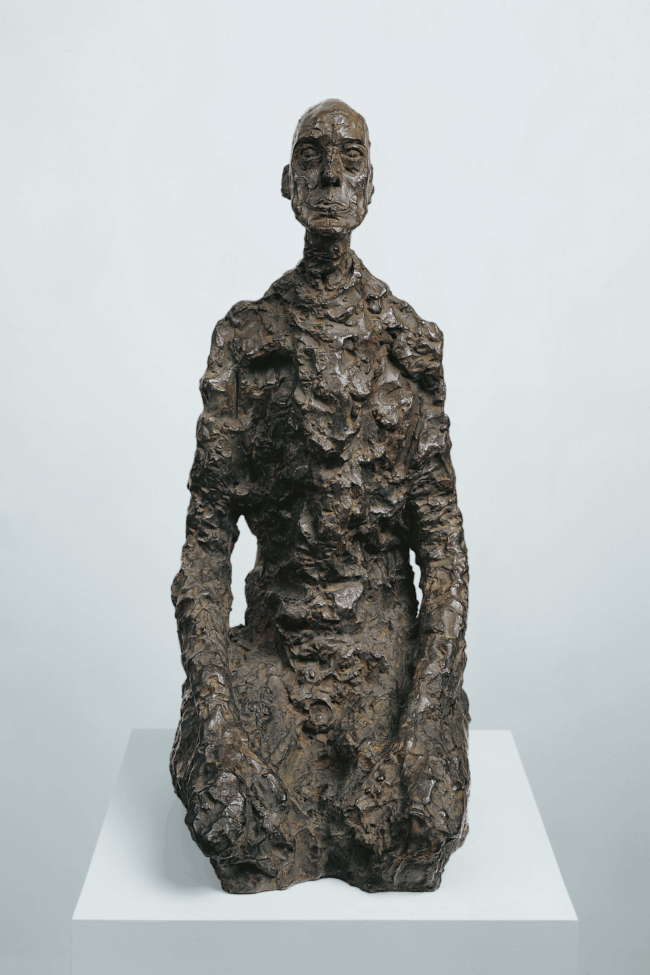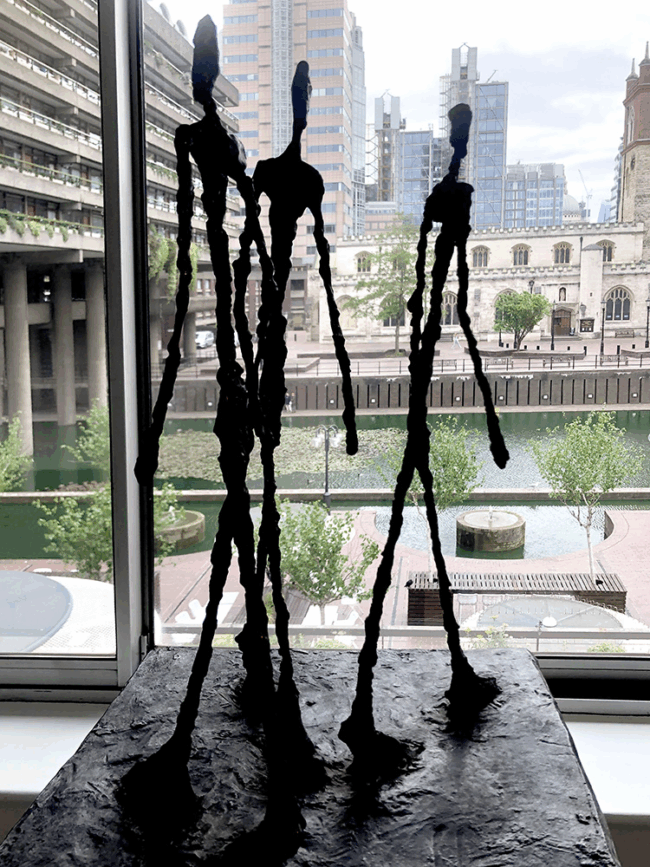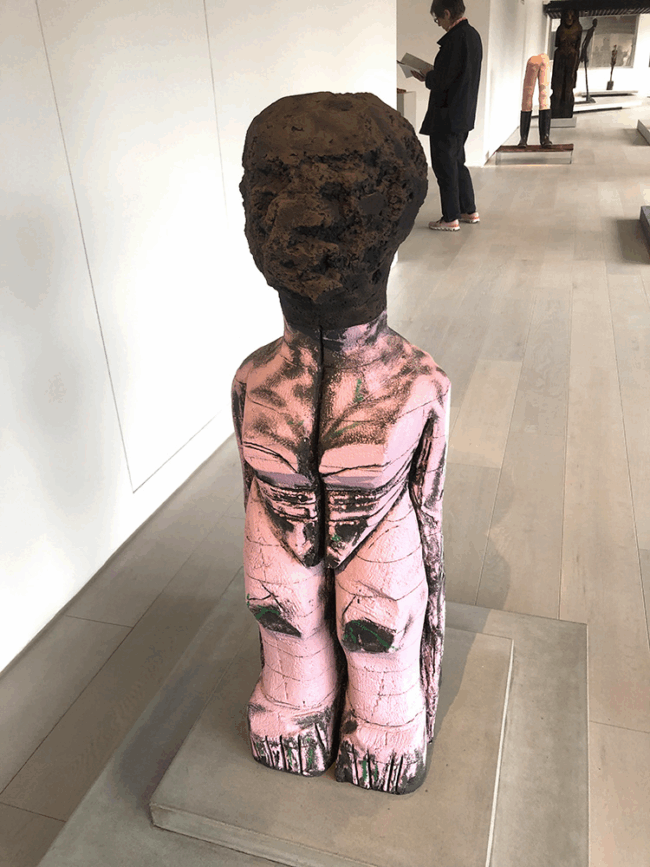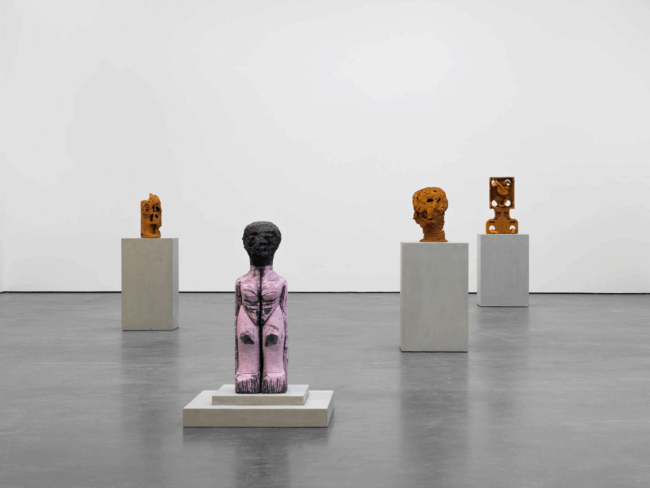Giacometti and Huma Bhabha's sculptural conversation contrasts materials and aesthetics, reflecting divergent modernities shaped by heritage and disp
Giacometti and Huma Bhabha’s sculptural conversation contrasts materials and aesthetics, reflecting divergent modernities shaped by heritage and displacement.
Few sculptures are as instantly recognizable as Alberto Giacometti, the Swiss artist whose elongated human forms evoke existential solitude. At first glance, pairing contemporary Pakistani-American artist Huma Bhabha alongside post-war icon Giacometti appears as a disjunction in terms of numerous categories: geography, culture, chronology and gender. Yet, dialogue between Giacometti and Bhabha may appear anchored in their shared preoccupation with monumentality and ruin, sculptural form and the body, humanism and posthumanism.
At the core of both Giacometti’s and Bhabha’s practices is a figure: distorted, fragmented, or spectral. Giacometti’s attenuated bronze sculptures embody a postwar crisis of faith in the human subject. Their verticality, precariousness, and reduction to linear essentials reflect the existential weight of mid-twentieth-century Europe. Giacometti’s figures forgo anatomical accuracy for psychic truth. They serve as witnesses of survival and the impact of the trauma as inflicted upon the body and self as a result of World War Two.

Bhabha’s figures, by contrast, arise from the rubble of a different modernity. Time converges in Bhabha – the ancient, the modern, the contemporary and science-fiction. Her reality remains shaped by colonial legacies, migration, environmental ruin, and science fiction. Her materials, ranging from cork, Styrofoam, clay, and skull fragments, suggest impermanence, decay and disarray. Bhabha’s sculptures are raw, heavily worked, and imbued with the material fragmentation of her own domestic and cultural world. Terracotta and carpet fragments pay homage to her heritage, while her use of layering, spray paint, and carving registers various forms of violence – political, ecological, and psychological.

Unlike Giacometti’s introspective search for existential essence, Bhabha’s materiality serves as a critique of global structures. Bhabha directly acknowledges Giacometti as a formative influence, particularly his clay application and mark-making, which she likens to graffiti. For both artists, material is not merely a vehicle but a conceptual medium. Giacometti’s compulsive engagement with plaster and bronze yielded surfaces worn thin, rough and fossil-like, inherently shaped by erosion. Bhabha’s assemblages feel scavenged, fragmentary, precarious; yet, their presence aids the formulation of a contemporary artistic vocabulary.

Giacometti’s humanist outlook insists on the dignity of existence, persisting under the weight of trauma. His sculptures resist objectification, penetrating the superficial to affirm the essence of being. Bhabha’s outlook is decidedly more post-human. Her figures externalize their views, directly confronting viewers with rupture and scarring. Their grotesque forms act as a warning and acknowledgement of violence along lines of race, gender, and power, insisting on confrontation.

In juxtaposing these two intergenerational artists, Encounters does not propose simple continuity. Rather, it stages a meeting in fragility, where two distinct voices grapple with the emotional core of what it means to persist as human. Giacometti, the postwar giant, cedes conversational space to contemporary figures like Bhabha, yet both are haunted by the same question: how the lone figure can endure in a world hostile to its presence
Images by Peter Clossick,
Images by David Zwirner.
